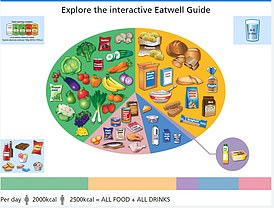The 3 surprising foods that WON’T fill you up
Bread or chips may seem like a filling snack.
But the food can actually make you hungrier than before.
In fact, experts say their lack of fiber and whole grains may make you look for another option to eat.
Here, MailOnline reveals the reasons why these foods won’t stop you from snacking, according to a dietician.
While white bread can taste great, whole wheat would be a much more filling option
White bread
White bread is considered one of the unhealthiest foods.
Plus, eating a few slices won’t even make you feel full, experts say.
This is because, unlike whole grain varieties, it is low fiber.
Fiber is essential for controlling hunger and helping people feel fuller for longer.
Studies also show that the body produces acetate when digesting fiber, which travels to the brain and suppresses hunger pangs.
A slice of white bread has only 1 gram per slice, while whole wheat has three times more.
Low fiber means that white bread has a high glycemic index (GI) score, meaning it is broken down quickly by the body and causes a rapid spike in blood sugar.
In turn, it can lead to an energy crash, which can make you hungrier than before.
Registered dietitian Nichola Ludlam-Raine said, “A slice of white bread contains about 1 gram of fiber, in addition to quickly digested carbohydrates.
‘Wholemeal bread, on the other hand, can contain two to three times as much and therefore has a lower GI.’
While it may seem easier to cut out bread altogether, Ms. Ludlam-Raine says you can still enjoy your favorite bread as long as it has a healthy topping.
She said, “However, the most important thing is not the type of bread you have, but the portion size and what you combine it with.”
“If you’re going to eat white bread, top it with some nut butter or avocado to help lower the GI.”
“Or better yet, make sure it’s sourdough, which has a lower GI compared to normal white bread – a few slices is a serving.”
Potato chips
Chips are one of the many potato-based snacks we love to enjoy.
While one serving can be a tempting treat, it’s unlikely to fill you up.
For her scores pretty high on the satiety index — a scoring system developed by researchers in Australia that measures how hungry a person is after eating a 240-calorie serving of various foods.
This means that the moreish, bite-sized snack does a pretty bad job of keeping you satisfied.
However, baked or boiled potatoes perform better in reducing hunger levels.
The side dish is not only low in fiber, but also high in salt, with a McDonald’s serving containing 0.62 g.

Chips are one of the many potato-based snacks that Britons love to enjoy. While one serving can be a tempting treat, it’s unlikely to fill you up
Studies have shown that eating a lot of salt, rather than making people thirsty, increases hunger.
Mrs Ludlam-Raine said: ‘The humble potato, eaten in moderation, will not derail a healthy eating journey.
“But if it’s fried and eaten to excess, it’s okay.”
low-fat yogurt
While low-fat yogurt may seem healthy, it can give you a false sense of security.
To replace natural fat, manufacturers tend to cram in sugar and sweeteners to make the product taste better.
While too much sugar can cause a crash and increase hunger pangs, sweeteners have also been linked to eating more.
The World Health Organization warned yesterday that swapping sugar for sweeteners does not aid weight loss and could lead to health problems.
In addition to yogurt’s low-fat ingredients, texture can also be an issue.

Low-fat yogurt alone can be surprisingly harmful to your diet
A study published in the journal Physiology & Behavior found that people who ate food that needed to be chewed self-reported feeling less hungry.
The team of international researchers found that increasing the number of chews per bite increased levels of gut hormone linked to feelings of fullness.
But for low-fat yogurt fanatics, Ms. Ludlam-Raine suggested adding extra sources of protein to your yogurt to curb those cravings.
She said, “Add some chopped nuts or seeds for some healthy fats, protein, and fiber, as well as other vitamins and minerals.”
“The yogurts you should eat in moderation are low-fat yogurts with a higher sugar content that may not make you feel as full as maybe regular yogurt sweetened naturally with fruit at home.”
But Dairy and soy yogurts always provide protein, which slows the release of energy, Ms Ludlam-Raine added.

